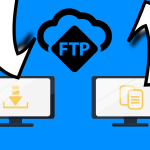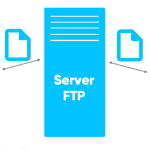
When you’re choosing a network carrier for your dedicated server, it’s an important decision to make. Understanding your options fully is key. The difference between premium carriers and budget carriers often comes down to their global reach, reliability, and level of service. During the selection process, you may come across terms like Tier 1, Tier 2, and Tier 3, but what do they actually mean?
The internet is made up of a vast hierarchy of infrastructure owned by different companies, known as network carriers. These carriers have organized themselves into different tiers and have negotiated contracts to expand their internet access beyond their own infrastructure.
So, when choosing a network carrier, it’s essential to consider both premium and budget options, taking into consideration factors such as their global reach, reliability, and the level of service they provide. Understanding the different tiers in the network carrier hierarchy will help you make an informed decision.
What is a Tier 1 Network?
Tier 1 networks are top-level carriers or service providers who either own their own networks or have special agreements with other Tier 1 providers. Unlike other providers, they do not purchase services from other companies. Instead, they rely on unpaid peering agreements to connect with other Tier 1 providers and exchange network traffic.
These networks are the largest in terms of geographical coverage and have the highest global reach. Tier 1 providers can reach any part of the internet without having to pay agreements with other network carriers.
One of the advantages of Tier 1 networks is their ability to protect against Distributed Denial of Service (DDoS) attacks. By providing multiple connections from your internal network to the internet, they eliminate any single point of failure or bottleneck.
Determining whether a network is truly Tier 1 can be challenging. Business agreements between providers are typically kept confidential and are often bound by non-disclosure agreements. However, the Renesys Corporation regularly releases lists of Tier 1 networks.
So, if you are looking for a reliable and robust network with global coverage and protection against DDoS attacks, Tier 1 networks are a great option to consider.
What is a Tier 2 Network?
A Tier 2 Network refers to a type of network where providers utilize transit connections and some peering methods to connect to the internet. However, in order to access all areas of the internet, they need to purchase access from Tier 1 providers. Transit connections allow network traffic to flow across a computer network, primarily serving as a bridge between smaller internet service providers and the larger internet.
Unlike Tier 1 networks, Tier 2 networks do not handle a significant amount of traffic. They often establish peering connections with other Tier 2 networks, but typically have to pay a fee to access Tier 1 networks.
Typically, Tier 2 networks are comprised of smaller companies. Due to their size, they may be more open to negotiating deals or custom Service Level Agreement (SLA) contracts.
It is important to note that the given content does not focus on budget carriers or DDoS attacks.
What is a Tier 3 Network?
A Tier 3 network refers to budget carriers or Tier 3 providers that do not have transit customers. These networks need to purchase access from Tier 2 providers, and sometimes even from Tier 1 providers. As a result, all non-local network traffic is directed towards the larger internet through a single path or default route. These types of networks are also known as last mile providers. However, due to potential congestion or throttling issues, they may not be ideal for business data centers, especially when it comes to safeguarding against DDoS attacks.
Advantages of Tier 1 Network Carriers
Tier 1 network carriers are considered the top-tier providers. While Tier 2 options may offer a cheaper alternative, they often come with additional connection fees. Choosing Tier 1 carriers for your data center comes with numerous benefits:
1. Reliability: Tier 1 carriers are known for their high level of reliability and performance. They have extensive networks and infrastructure in place to ensure minimal downtime and maximum uptime for your data center.
2. Global Reach: Tier 1 carriers have a vast global network, allowing for seamless connectivity and data transfer across different regions and countries. This ensures that your data center can efficiently serve customers and clients worldwide.
3. High Speeds: With Tier 1 network carriers, you can expect ultra-fast internet speeds and low latency. This is crucial for data-intensive applications and services, ensuring smooth and seamless user experiences.
4. Enhanced Security: Tier 1 carriers invest heavily in robust security measures, protecting your data center from cyber threats and unauthorized access. They employ advanced technologies and protocols to safeguard your valuable data.
5. Scalability: Tier 1 carriers have the ability to handle high volumes of traffic and accommodate growing bandwidth needs. This scalability is essential for businesses and data centers that experience rapid growth.
Choosing Tier 1 network carriers for your data center provides you with a reliable, high-performance, and secure network infrastructure. While Tier 2 carriers may offer cost savings, the advantages of Tier 1 providers make them a valuable choice for ensuring the best connectivity and service for your data center.
Conclusion
Budget network carriers may come with hidden fees for connecting to Tier 1 providers, making them not truly the most cost-effective option. If you decide to contract with a Tier 2 provider instead, it is important to fully understand the terms of the agreement.
By opting for premium, Tier 1 carriers, you gain access to an extensive network reach, minimal latency, and various bandwidth choices. You can expect excellent reliability and service level agreements (SLAs) that guarantee reimbursement for exceeding downtime thresholds.














